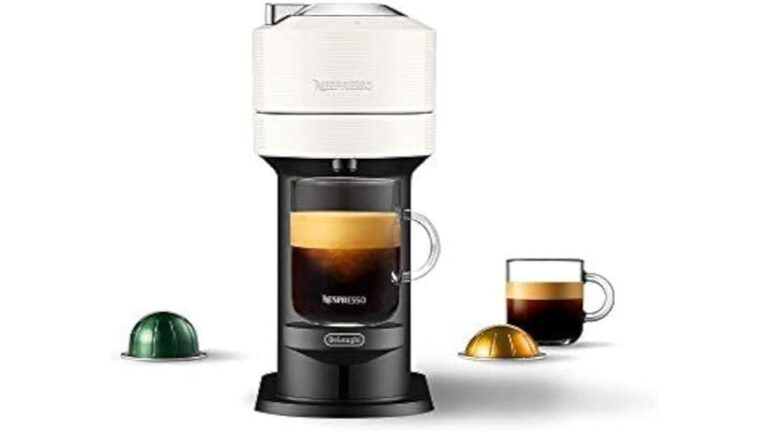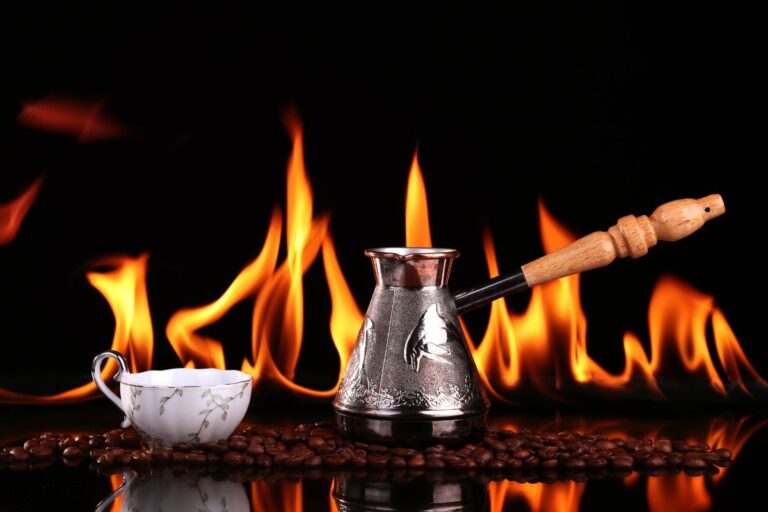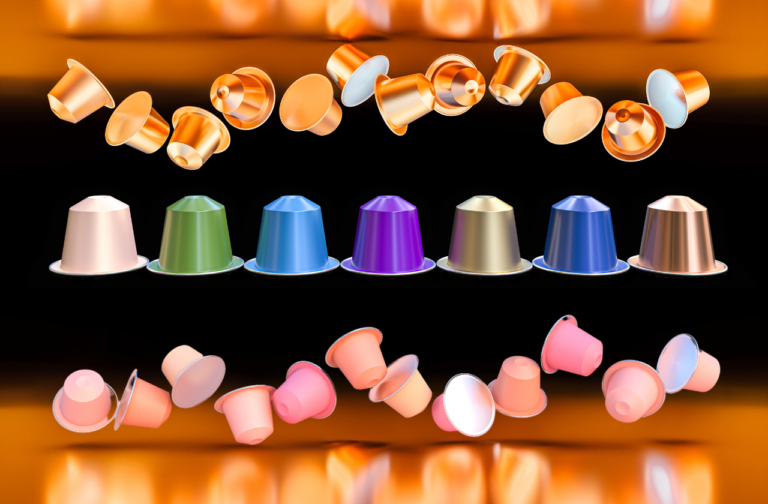Macchiato Vs. Latte
In the world of coffee, the richness of flavors, aromas, and textures presents a delightful array of choices for enthusiasts and casual drinkers alike. Among the plethora of options, two Italian classics—Macchiato and Latte—often stand out. Yet, despite their popularity, there’s a common confusion about what sets these two apart. Are they just fancy names for strong coffee, or is there more to the story?
At first glance, Macchiato and Latte might seem similar, both containing espresso and steamed milk. However, the devil is in the details—or, in this case, in the ratios of espresso to milk and the method of preparation. These differences not only affect the texture and flavor of each drink but also how and when they are typically enjoyed.
By comparing and contrasting Macchiato and Latte, we’ll explore the nuances that define these coffee shop staples. Whether you’re a seasoned barista, a coffee aficionado, or someone who simply enjoys a good cup of joe, understanding these differences can enhance your coffee experience, helping you make a more informed choice the next time you are looking at the menu at your favorite café.
The Basics Of Macchiato And Latte

Both Macchiato and Latte have their roots in Italian coffee culture but have found unique expressions and variations around the world. They share key ingredients – espresso and steamed milk – but it’s the proportion and method of preparation that set them distinctly apart.
The Macchiato
The word “Macchiato” in Italian means “stained” or “marked,” a fitting description for this espresso-based drink. Traditionally, a Macchiato is made with a shot of bold, rich espresso “stained” with a dollop of steamed milk and, in some variations, a little foam.
This drink is known for its strong espresso flavor, making it a favorite among those who prefer a robust coffee experience. Over time, the Macchiato has evolved, with variations like the Latte Macchiato gaining popularity, especially in Western coffee culture.
The Latte
Conversely, a Latte, or a Caffè Latte, translates to “milk coffee” in Italian. It’s a fitting name for a drink that is predominantly milk. A standard Latte starts with a base of one-third espresso, topped up with about two-thirds steamed milk, and often finished with a layer of frothy milk foam.
This results in a creamier, milkier coffee beverage that’s milder in flavor compared to a Macchiato. Lattes are often the go-to choice for those who enjoy a softer, smoother coffee experience, with the milk complementing rather than overpowering the espresso.
Weird Coffee Tip: All espresso-based drinks use the same base ingredients, but every espresso drink is vastly different. To learn more about popular espresso-based drinks, their differences, and how to make them, take a look at this article:
Types Of Espresso Drinks
Macchiato Vs. Latte: Composition And Preparation

The composition of a Latte is all about achieving a harmonious blend of coffee and milk. It starts with a base of one-third espresso. The espresso used is usually a single or double shot, depending on the size and strength preference.
Following the espresso, steamed milk is added, making up approximately 50% of the total volume. The final touch is a layer of foamed milk, which not only adds to the creaminess but also serves as a delightful canvas for latte art. This layering results in a beverage that is mild in coffee flavor, allowing the creamy texture and subtle sweetness of the milk to come through.
The Macchiato, in its traditional form, presents a more balanced espresso-to-milk ratio. It typically consists of an equal 50-50 split between espresso and steamed milk. This balance allows the boldness of the espresso to shine through while being gently softened by the warmth and texture of the milk.
In variations like the Espresso Macchiato, the emphasis is even more on the espresso, with just a teaspoon of steamed milk and a little milk foam added. The Latte Macchiato flips this script, featuring a double shot of espresso in a larger volume of steamed milk and foam, creating a 1:2:2 ratio.
These variations highlight the versatility of the Macchiato, catering to a range of preferences from strong to subtle coffee flavors.
Each drink’s composition and preparation reflect not just a difference in taste but also in the experience. While Lattes offers a comforting, smooth sip, Macchiatos provide a more direct espresso hit, tempered by just enough milk to add complexity without overwhelming the coffee’s natural flavors.
Macchiato Vs. Latte: Flavor Profiles
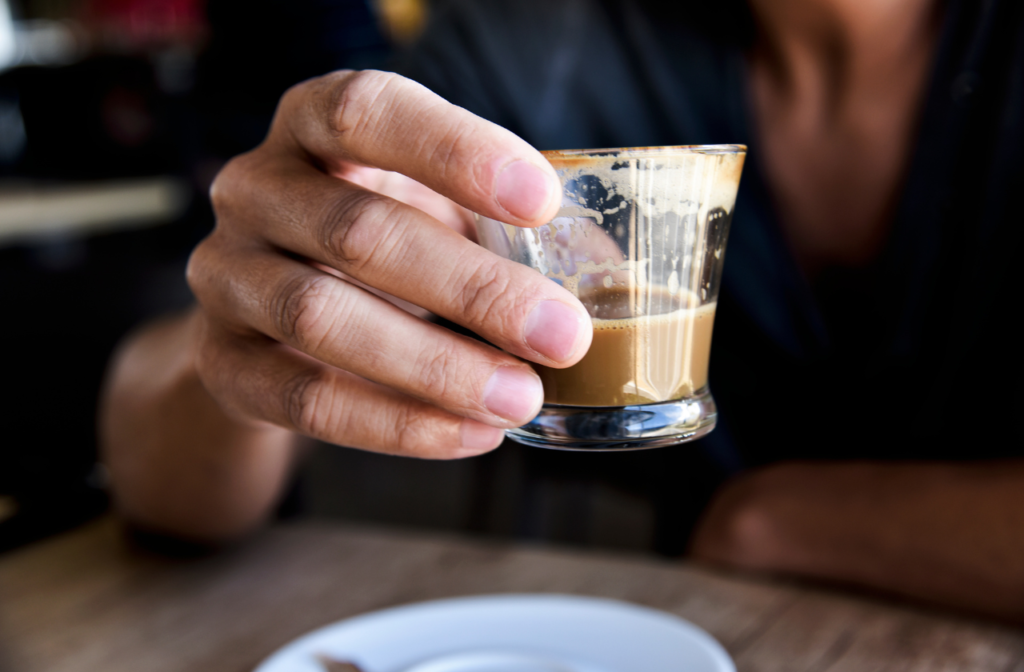
Lattes are renowned for their creamy, smooth character. This profile is achieved by the higher milk content, which softens the boldness of the espresso and introduces a gentle sweetness inherent to steamed milk.
The result is a coffee drink that’s milder and more approachable, especially for those who might find straight espresso too intense.
The texture of a Latte is also key to its appeal – the combination of steamed and frothed milk creates a velvety consistency that’s comforting and indulgent. For many, a Latte is less about the intensity of the coffee and more about enjoying a warm, soothing beverage where the coffee acts as a complement rather than the main character
In contrast, a traditional Macchiato offers a more espresso-forward experience. The equal ratio of espresso to steamed milk in a Macchiato allows the rich and robust flavors of the espresso to dominate.
This results in a drink that’s stronger and more coffee-centric, appealing to those who appreciate the complex flavors and aromas inherent in espresso. The steamed milk in a Macchiato, while less in quantity compared to a Latte, plays a crucial role.
It softens the espresso’s bitterness slightly and adds a hint of creaminess, creating a more balanced and nuanced beverage. For coffee purists or those seeking a more intense coffee experience, the Macchiato hits the mark, delivering the essence of espresso with just enough milk to add a touch of smoothness.
In essence, the choice between a Latte and a Macchiato often comes down to one’s preference for the strength and prominence of the coffee flavor. While Lattes offers a milder, milkier taste, Macchiatos provide a bold coffee punch balanced by a hint of milk.
Macchiato Vs. Latte: Ratios And Textures

The distinct characteristics of a Macchiato and a Latte are significantly influenced by their milk-to-coffee ratios and the resulting textures. These aspects are crucial in defining each beverage’s unique sensory experience.
In a Latte, the predominant component is milk, with a typical ratio of two parts milk to one part coffee (2:1). This high proportion of milk dilutes the espresso, resulting in a beverage that’s less intense in coffee flavor.
The steamed milk adds a silky texture, while the layer of frothed milk on top introduces a light, airy quality. This combination creates a drink that’s smooth and mellow, with the coffee providing a subtle background note.
Lattes are often favored by those who enjoy a gentler coffee experience or prefer the soothing qualities of steamed milk.
On the other hand, a traditional Macchiato features a more balanced milk-to-coffee ratio, typically around 1:2. This means that the espresso is more pronounced, making the drink stronger and more coffee-centric.
The steamed milk, while present in a lesser quantity, adds a slight creaminess and helps to round out the espresso’s sharpness without overpowering its natural flavors. In a Macchiato, the texture is less about the smoothness of milk and more about the bold, rich body of the espresso.
The drink appeals to those who seek a more robust and direct coffee experience, where the espresso’s depth and complexity are at the forefront
Understanding these ratios and textures is key to appreciating the nuances of a Macchiato and a Latte. They not only influence the flavor profile but also the overall drinking experience, from the first sip to the last.
Macchiato Vs. Latte: Variations

While Macchiatos and Lattes have their origins in Italian coffee culture, their interpretations and adaptations vary significantly across different regions and cultures. These variations reflect not only local tastes but also the evolution of coffee culture globally.
In Italy, a Macchiato is traditionally a strong espresso with a small amount of milk. However, in other parts of the world, particularly in North America, the Macchiato has taken on a different identity.
Here, it is often served as a much larger drink, sometimes with added flavors like caramel or vanilla. This adaptation reflects a broader palate preference, where the bold espresso flavor is balanced with sweeter, more indulgent elements.
The Latte, too, has seen its share of regional adaptations. While maintaining its basic composition of espresso and steamed milk, Lattes in different countries might feature unique flavors, from the addition of local spices to variations in the type of milk used.
Additionally, Lattes have become a popular canvas for latte art, an aspect that has gained significant cultural importance in coffee shops around the world. This art form adds a visual appeal to the drink and is often seen as a mark of skill and creativity in barista craft.
These cultural and regional variations not only demonstrate the adaptability and global appeal of Macchiatos and Lattes but also highlight how coffee culture can be a reflection of local tastes and culinary traditions.
Choosing Between Macchiato And Latte

When it comes to selecting between a Macchiato and a Latte, the decision largely hinges on personal taste preferences, particularly regarding the strength of the coffee flavor and the desired creaminess or milkiness of the beverage.
If you’re someone who appreciates the robust, rich flavor of espresso, a Macchiato is likely the right choice for you. Its higher espresso-to-milk ratio means the coffee’s boldness and complexity take center stage. The Macchiato is ideal for those who enjoy the depth and intensity of espresso but want just a touch of milk to soften the edges. It’s also a great choice for those seeking a less calorie-dense option, as it contains less milk.
If you prefer a milder coffee experience with a creamy texture, a Latte is the way to go. The higher proportion of milk in a Latte results in a smoother, gentler drink where the espresso serves more as a background note.
Lattes are especially popular among those who might find the taste of straight espresso too strong or bitter. They are also a canvas for various flavor additions, making them a versatile choice for different taste preferences.
Ultimately, the choice between a Macchiato and a Latte may also depend on the time of day or the occasion. A Macchiato could be more appealing as a quick, strong coffee hit to start the day or as an after-dinner drink, while a Latte might be more suited for a leisurely afternoon break or when you’re in the mood for something less intense and more comforting.
Conclusion
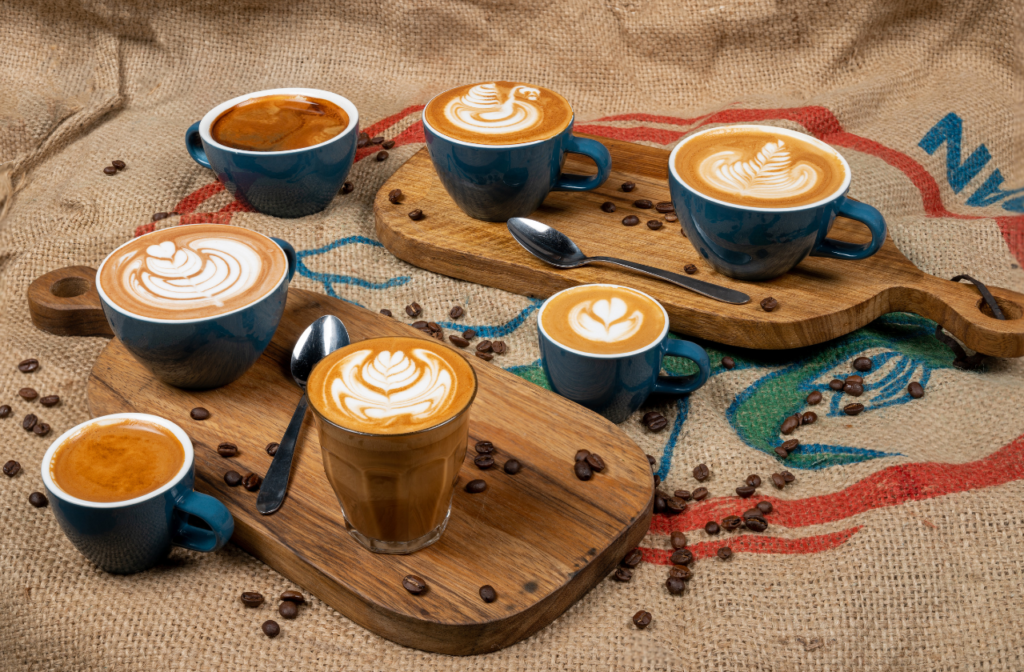
In the rich and varied world of coffee, understanding the differences between a Macchiato and a Latte can significantly enhance your coffee experience. While both beverages share common ingredients – espresso and steamed milk – it’s the ratio and preparation methods that set them apart, defining their unique flavor profiles, textures, and overall character.
A Macchiato, with its espresso-forward taste and minimal milk, caters to those who seek a bold coffee experience. In contrast, a Latte, being milder and creamier due to its higher milk content, is perfect for those who enjoy a softer, smoother coffee.
These differences not only reflect individual preferences but also the diverse and evolving nature of coffee culture around the world. Whether you prefer the robust intensity of a Macchiato or the comforting creaminess of a Latte, each drink offers a unique window into the art and science of coffee-making.
So the next time you find yourself at a coffee shop, pondering the menu, consider what you’re in the mood for – a bold and direct espresso hit or a gentle and soothing milky treat. Whichever you choose, you’re in for a delightful coffee experience.

